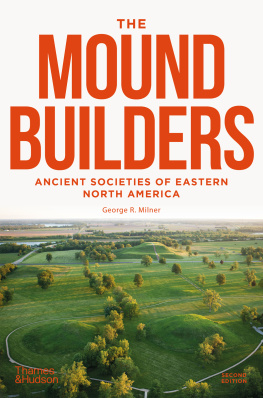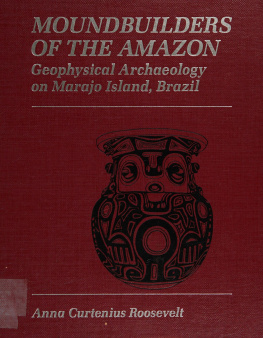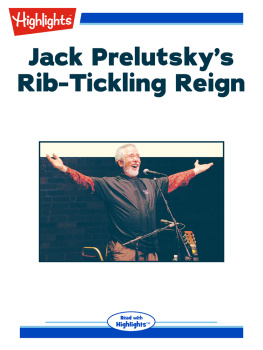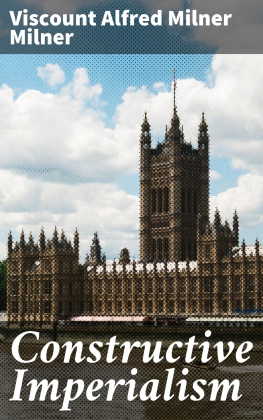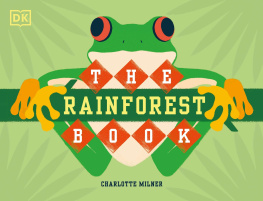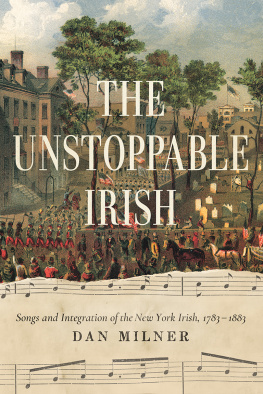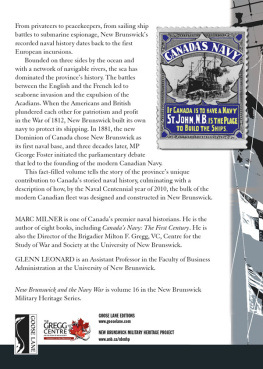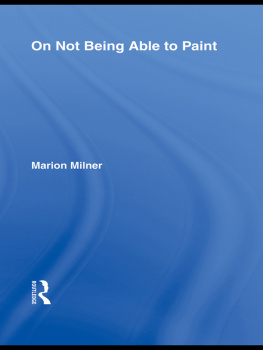George R. Milner - The Moundbuilders
Here you can read online George R. Milner - The Moundbuilders full text of the book (entire story) in english for free. Download pdf and epub, get meaning, cover and reviews about this ebook. year: 2021, publisher: Thames & Hudson, genre: History. Description of the work, (preface) as well as reviews are available. Best literature library LitArk.com created for fans of good reading and offers a wide selection of genres:
Romance novel
Science fiction
Adventure
Detective
Science
History
Home and family
Prose
Art
Politics
Computer
Non-fiction
Religion
Business
Children
Humor
Choose a favorite category and find really read worthwhile books. Enjoy immersion in the world of imagination, feel the emotions of the characters or learn something new for yourself, make an fascinating discovery.
- Book:The Moundbuilders
- Author:
- Publisher:Thames & Hudson
- Genre:
- Year:2021
- Rating:4 / 5
- Favourites:Add to favourites
- Your mark:
- 80
- 1
- 2
- 3
- 4
- 5
The Moundbuilders: summary, description and annotation
We offer to read an annotation, description, summary or preface (depends on what the author of the book "The Moundbuilders" wrote himself). If you haven't found the necessary information about the book — write in the comments, we will try to find it.
The Moundbuilders — read online for free the complete book (whole text) full work
Below is the text of the book, divided by pages. System saving the place of the last page read, allows you to conveniently read the book "The Moundbuilders" online for free, without having to search again every time where you left off. Put a bookmark, and you can go to the page where you finished reading at any time.
Font size:
Interval:
Bookmark:



Who built the numerous earthen mounds in eastern North America? Two centuries ago, many thought they were the work of a mysterious people who had nothing to do with Native Americans, who were then being pushed ever westward by inexorable waves of immigrants, mainly from Europe. The reality is, however, that the mounds dotting the land were built by Native American ancestors, whose descendants remain in the United States and Canada.
This book examines the deep history of eastern North America. Its focus is, for the most part, on the two millennia preceding the arrival of Europeans and on the places where mounds are most abundant. The Midwest as far south as Kentucky receives the greatest attention simply because that is where I have conducted fieldwork. While there is much more about eastern North Americas past that could be covered, the mound-building societies serve as a fine introduction to the remarkable achievements and rich cultural heritage of the lands original inhabitants.
This edition of The Moundbuilders has been revised to reflect new findings about the people who once occupied eastern North America. It includes, in , which covers post-contact-period Native Americans who were facing a time of great change, including population decline and movement, has been expanded. The effects of being swept up into the political and economic aims of European powers get a lengthier treatment, as does the introduction of new plants, animals, and pathogens.

Figure 1 Monks Mound at Cahokia, Illinois, is shown on this early twentieth-century postcard. Today the mound is preserved in a park.
The broad geographical coverage and temporal scope of this book mean that emphasis must be placed on the general characteristics of life at different points in time. Where the evidence is available, however, certain individuals are discussed to put a human face on what might otherwise simply be a dry account of archaeological materials. Because the focus is on life in the past, the multitude of names for, for example, various kinds of pottery and projectile points are avoided, as are those for the local cultural units that, taken together, make up lengthy regional sequences.
The chronological ordering of sites has advanced greatly since the mid-twentieth century when radiocarbon dating was developed. Conventional radiocarbon dates are not the same as calendar years estimated by calibrated radiocarbon dates. Adjustments to radiocarbon dates are needed because changes have occurred over time in the isotopic composition of atmospheric carbon. Discrepancies between radiocarbon and calendar dates are generally greater the further one goes back in time. In this book, dates for the early occupation of eastern North America, from Paleoindian through the Early Archaic period, are given in approximate calendar years after radiocarbon dates were calibrated using the OxCal 3.4 program. Calibrated dates facilitate comparisons with climatic events that are an especially important part of the story for the initial occupation of the Americas. Dates for later culture periodsfrom the Middle Archaic onwardcome from a bewildering array of radiocarbon dates adjusted in various ways, or not at all. They are the ones customarily used by archaeologists. That is not a great problem in this book because the beginning and ending of these cultural periods are reasonably close approximations of calendar years. There is, in fact, variation from one place to the next in the timing of the cultural developments discussed here, often on the order of centuries. The objective here is to provide an overall feel for cultural change that occurred across a vast area over an immense period of time, so dates finely tuned to local cultural developments are unnecessary.
Artifacts and architectural remnants do not speak for themselves. Interpretations of archaeological materials that have the strongest evidentiary support from regional surveys, site excavations, and laboratory analyses are emphasized in this book. Assessments of these archaeological data are augmented by a comparative perspective based on an eclectic mix of ethnographic and historical information about roughly comparable societies from around the world. They include groups that faced similar opportunities and constraints related to their environmental settings, demographic footprint, and capacity to produce, store, and distribute food along with the other necessities of life. In short, I present in this book what I regard as being the most valid inferences from available evidence.

Chronological Table: Precisely when major cultural periods began and ended is debated, and new means of calibrating radiocarbon dates will continue to result in revisions of our understanding of when particular cultural developments took place.
The two editions of this book could not have been completed without the help of many people. Several colleaguesDavid G. Anderson, Rebecca Ferrell, Richard W. Jefferies, Claire McHale Milner, Lee A. Newsom, Michael Shott, Dean R. Snow, and Michael D. Wiantprovided insightful comments on some, or all, of the first edition. Scott W. Hammerstedt and Timothy M. Murtha prepared maps, and Judy Cooper and Megaera Lorenz drew several figures specifically for this book.
I should also like to thank the scholars who reviewed this new edition of The Moundbuilders for their many helpful observations. These are: Constance Arzigian, David Carballo, Gabriel Hrynick, Christopher Moore, Brian Redmond, and Victor Thompson.
Many people answered questions and directed me to source material; provided illustrations, including their own photographs; or looked through museum collections and archives for potential illustrations. They include, among others, David G. Anderson, Jennifer Barber, Robin Beck, Scott Beld, Robert L. Brooks, James A. Brown, Brian M. Butler, Christopher Carr, Robert A. Cook, Frank Cowan, George M. Crothers, Claudia Cummings, Richard A. Diehl, Ann M. Early, Kenneth B. Farnsworth, Shannon Fie, Russell Graham, Nomi Greber, William Green, David Hally, Judy Hamilton, Scott W. Hammerstedt, Nancy Hawkins, A. Gwynn Henderson, Keith P. Jacobi, Richard W. Jefferies, Duryea Kemp, William H. Marquardt, Nicolette Meister, Jerald T. Milanich, Jeffrey M. Mitchem, Steven Nash, Lee A. Newsom, David Pollack, Robert Riordan, Michael Russo, Martha A. Rolingson, Joe Saunders, Sissel Schroeder, Bruce D. Smith, Dean R. Snow, Vincas P. Steponaitis, Lynne P. Sullivan, David H. Thomas, Michael D. Wiant, and Randolph J. Widmer. I could not use all of the material and insights they so generously provided, but the resulting book is richer for it. An immense debt of gratitude is also owed to the innumerable people, extending back to the nineteenth century, who took part in field projects and have maintained museum collections. The guidance of my Thames & Hudson editors, first Colin Ridler and later Mark Sapwell, as well as George Maudsley, helped immeasurably to transform academic writing into something more readable.
Next pageFont size:
Interval:
Bookmark:
Similar books «The Moundbuilders»
Look at similar books to The Moundbuilders. We have selected literature similar in name and meaning in the hope of providing readers with more options to find new, interesting, not yet read works.
Discussion, reviews of the book The Moundbuilders and just readers' own opinions. Leave your comments, write what you think about the work, its meaning or the main characters. Specify what exactly you liked and what you didn't like, and why you think so.

